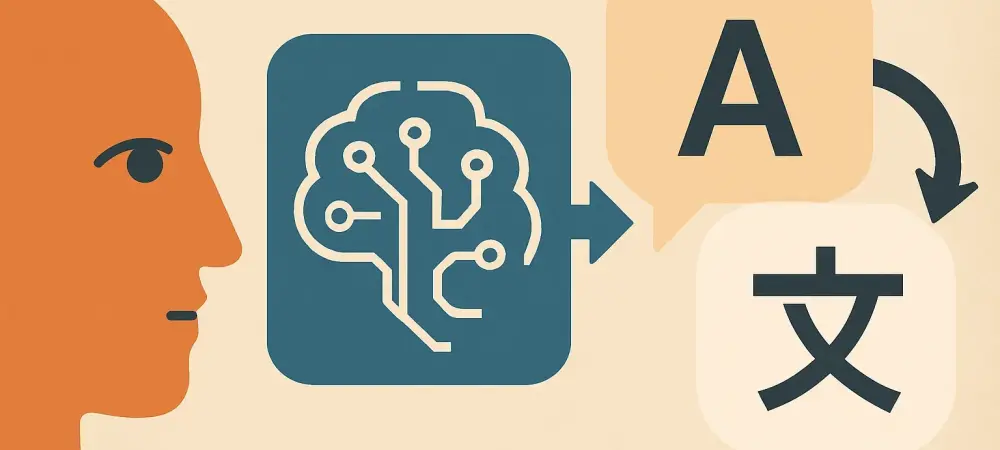Imagine a world where language barriers dissolve, allowing individuals from different corners of the globe to converse as if speaking the same tongue. Apple is poised to make significant strides towards this vision, with its anticipated advancements in artificial intelligence (AI) designed to revolutionize language translation. By integrating AI-driven translation capabilities across its product ecosystem, Apple aims to facilitate seamless international communication. The potential impact is vast, from enhancing personal exchanges to transforming global business interactions.
Integrating AI Translation in Messaging and AirPods
Enhancing the Messaging Experience
The evolution of Apple’s Messages app is set to include AI-powered real-time translation, a feature that could redefine how users communicate across languages. Historically, translation tools have required users to actively request translations, often interrupting the flow of conversation. With the anticipated integration of AI in the Messages app, messages could be automatically translated as they are sent and received, eliminating these disruptions. This transformative functionality allows users to engage in fluid conversations, focusing on the content rather than language limitations. Such seamless translation could foster more inclusive interactions, empowering users to connect with a broader audience regardless of their native language.
As AI becomes a more integral part of communication tools, the efficiency and accuracy of translations are expected to improve continually. By leveraging machine learning, the software could learn from user interactions, enhancing its understanding of contextual nuances and colloquialisms. This evolution could make conversations more natural and meaningful, bridging cultural gaps more effectively. Ultimately, this advancement could position Apple’s Messages app as a frontrunner in AI-driven communication tools, reshaping the landscape of digital interaction.
AirPods and Real-Time Communication
Speculation is rife regarding the integration of real-time translation features into Apple’s AirPods, a development that could offer groundbreaking benefits for users. By utilizing the processing power of iPhones, AirPods might be able to provide instantaneous audio translations directly into users’ ears. This feature would enable users to engage in multilingual conversations effortlessly, bridging the gap between different languages in face-to-face interactions. Such capability holds promise for both personal and professional use, streamlining communication in diverse settings from international travel to cross-cultural business meetings.
The application of real-time translation extends the potential of AirPods beyond their current status as popular audio devices, transforming them into essential tools for global communication. This functionality could pave the way for more productive interactions by removing language barriers, ultimately fostering deeper connections and understanding between individuals from different linguistic backgrounds. Additionally, the anticipated evolution of AirPods aligns with the broader trend of incorporating AI technologies in everyday devices, demonstrating how innovative applications can enhance user experience and open new communication horizons.
Broadening AI Translation Across Apple’s Ecosystem
Implications for Mail and Business Communication
Apple’s venture into AI-driven translation is not expected to stop at personal communication. Speculation suggests the AI translation capabilities could extend to other Apple applications, like the Mail app, with far-reaching implications for business communication. Real-time translation in emails could revolutionize international business correspondences, offering seamless communication between partners and clients across different languages. By bridging linguistic gaps, businesses could operate more efficiently on a global scale, enhancing collaborations and expanding market reach.
The potential integration of translation capabilities into Apple’s broader ecosystem aligns with the company’s strategy to offer cohesive, interconnected user experiences. It could also set a new standard for multilingual business tools, encouraging other technology companies to follow suit. By facilitating smoother interactions with international stakeholders, these advancements underscore the significance of AI in optimizing communication efficiency and breaking new ground in the digital business landscape. The incorporation of translation features could empower users to engage in productive exchanges, driving economic growth and innovation across industries.
Developers and Future Innovations
A fascinating angle of speculation involves the possibility of Apple opening up its AI translation technology to third-party developers through an API. This move could spur significant innovation within the app development community, allowing developers to tap into Apple’s powerful translation engine within Xcode, the company’s development environment. By providing access to sophisticated translation technology, Apple could foster the creation of a wide array of applications designed to meet diverse user needs across languages.
Opening translation technology to developers could lead to innovative app experiences, expanding Apple’s reach further into the multilingual digital domain. Such an initiative would not only enhance the functionality of existing apps but also drive the creation of new applications tailored to specific language-related challenges. As developers harness these capabilities, users would benefit from increasingly sophisticated tools that address real-world communication issues, further enhancing Apple’s position as a leader in AI-driven innovation.
Future Outlook for AI-fueled Global Connectivity
Imagine a world where language barriers are non-existent, enabling people from different parts of the world to communicate effortlessly, as if speaking a universal language. Apple is on the brink of making significant progress toward this dream, with its anticipated advancements in artificial intelligence (AI) promising to revolutionize language translation. By incorporating AI-driven translation features into its array of products, Apple hopes to promote effortless communication on an international level. The implications of this are extensive, ranging from improving personal interactions to transforming global business dealings. Such advancements could alter how families, friends, and colleagues in different countries connect, offering a richer and more cohesive understanding in every conversation. In business contexts, this could mean negotiating deals, collaborating on projects, and fostering partnerships without the hindrance of language differences. Ultimately, Apple’s AI-driven initiative could redefine communication, making the world feel intimately connected like never before.

